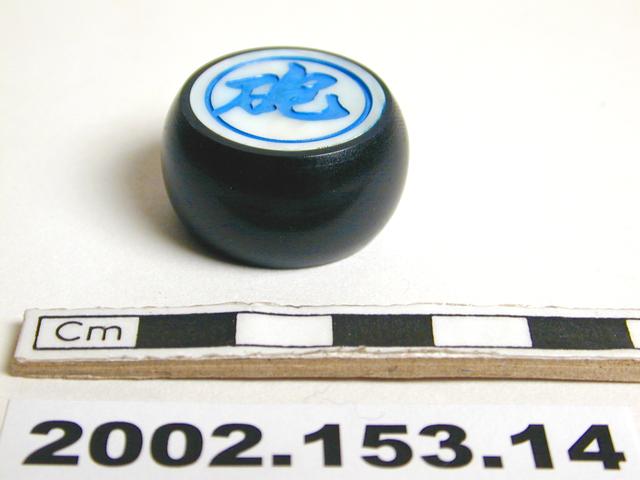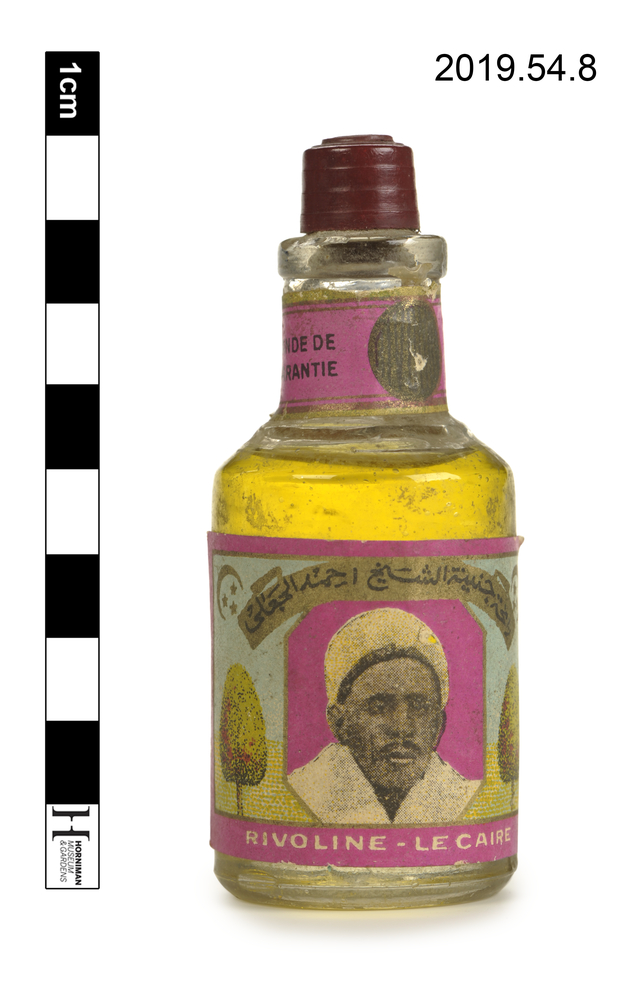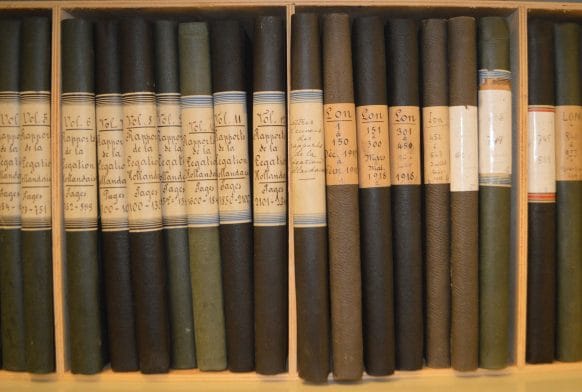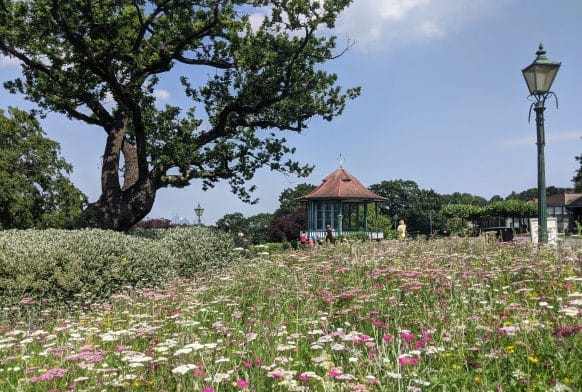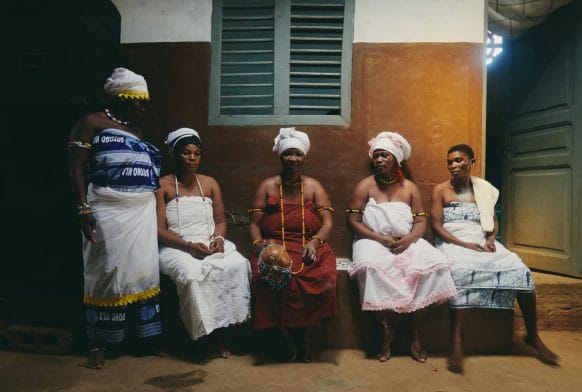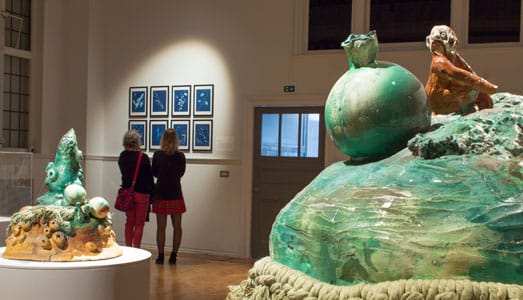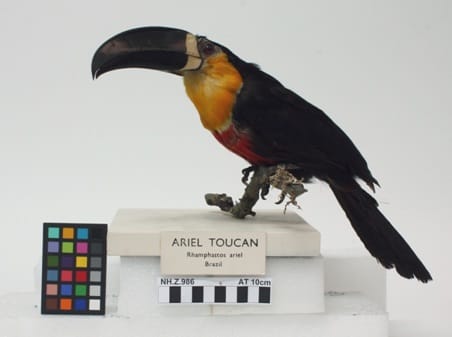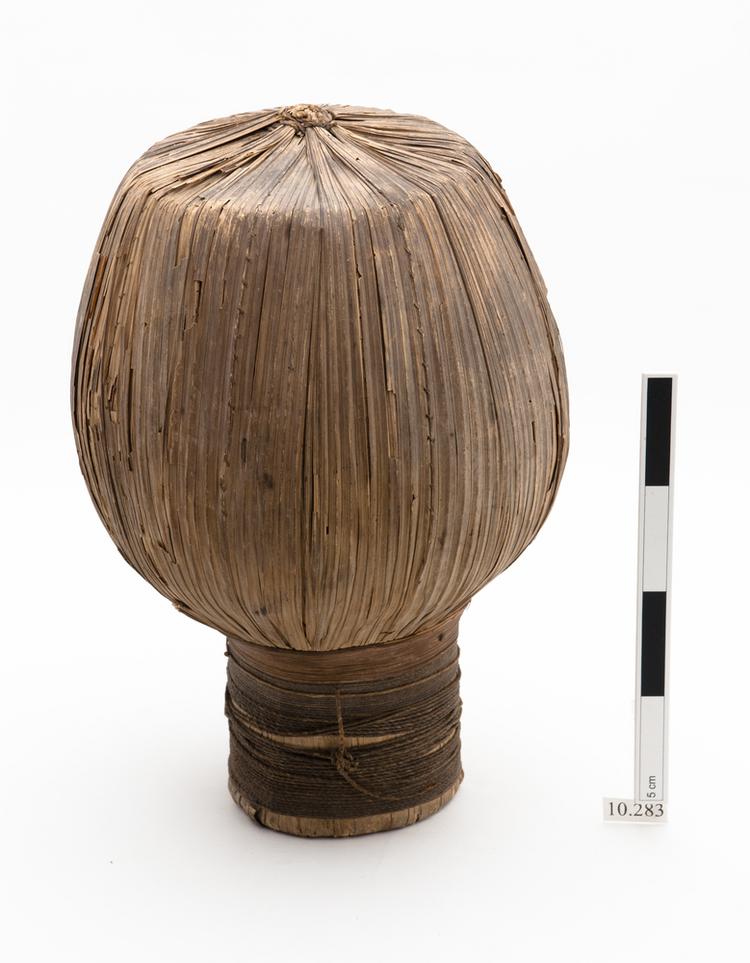
Bulbous hat or headdress worn by men initiated into the Ruk-Ruk secret society on Bougainville. The hat is made from a scaffold of split cane, which is overlaid with fibre and pandanus leaf.
Ruk-Ruk Society Initiate’s Hat, Hassebou, Northern Solomon Islands, Central Melanesia. In the northern part of Bougainville and Nissan islands in the northern Solomon Islands, men who were initiated members of the Ruk-Ruk secret society were referred to as matasesen and wore a distinctive hat to symbolise that. Known as hassebou, these hats were constructed over a woody basketry framework, overlaid with soft and comfortable Pandanus leaves inside, and wrapped in coarser leaf strips outside. The whole is light but surprisingly strong. Some scholars have argued that the shape of the hassebou was intended to make the matasesen resemble the bulbous-headed kokorra spirits depicted elsewhere in Bougainville art. The Ruk-Ruk (or Burri as it was known in some places) secret society was related to the similar Duk-duk initiation society of the Tolai on nearby New Britain. The words ruk and duk refer to spirits in each of the two islands, and both have been described as ‘Ghost Societies’. In preparation for Ruk-Ruk, a sacred clearing was cut out of the forest, and a ceremonial Ruk-Ruk house constructed. Both the clearing and the house were tabu (forbidden) to women and uninitiated children. When the adolescent boys came to undergo initiation, bullroarers were played inside the Ruk-Ruk house by the members of the society, and the uninitiated were told that the sound was the speech of male and female ruk spirits talking to the initiated inside the house. Once they had gone through their initiation into manhood, the initiates had all of their hair shaved off except a single lock at the back of the neck, which was strung with decorative beads. The young men were then entitled to wear the hassebou and take a wife. Wood, vegetable fibre. Late 19th Century. Collected between 1895 and 1897 in Bougainville by the zoologist Dr. Arthur Willey, and sold by him to the Horniman Museum in 1910.



